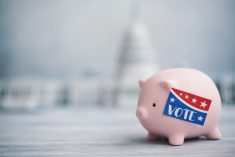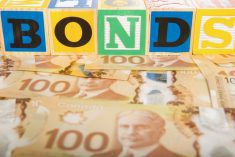Market action early in the new year is vindicating much of what I have written over the years, as numerous new concept and speculative stocks decline. This is normal market behaviour but has been devastating to many market participants, especially speculators who thought they were investors. Let’s look at the process of new company formation for better understanding. The odds of making it as a public company is akin to the odds of a U7 (formerly novice) player becoming an NHL star. The next column will provide illustrative examples.
Read Also

Gentle treatments for pain in the neck
Heading toward year-end, people unknowingly tense up against the cold and busyness, causing neck pain that can often be treated with appropriate support and gentle mobility, athletic therapist Kathlyn Hossack says.
New company formation is a critical component of capitalist democratic societies. Entrepreneurs start with a concept and their own money. The company would be at the U7 stage and like a U7 player they rarely have enough money, so they solicit investment from friends and family (parents) to fund the enterprise. This is referred to as the “friends and family” financing round.
Early-stage businesses require a lot of cash, just like rapidly growing kids have voracious appetites. If a hockey player does well in their early years, they make higher level, more competitive teams with better coaching. If the business has early success, the principal could approach angel investors or venture capital funds. If they successfully pitch such investors, they also get significant mentorship, coaching and connections through the fund.
Venture funds get their money from private investors or institutions. Some time ago, I met with a venture fund and was surprised by its anticipated success rate. The fund intended to invest in 10 startup companies, and from their experience expected five to seven to fail with two to three experiencing modest success and were hoping one would be a star. If they did a good job selecting investments, they targeted doubling to tripling an investor’s money over a 10-year period. My simple thought was, “I can double or triple my money in 10 years with Royal Bank and Bell Canada. Why take the risk of a venture fund to get similar performance?” That said, many investors gravitate to such private equity funds, which are critical in the entrepreneurial ecosystem.
Hopefully you are starting to get a sense of the daunting process facing a new startup to making the big leagues. Getting into a venture fund could be like making major junior A, an awesome accomplishment. Yet still a long way from the NHL. Only about one in five junior A players graduate to the NHL and even of those drafted, only half get to play a game in the big show.
The big show
If a business clears all of those hurdles, the big show is the public markets. If the company and its current investors sense a public appetite for shares in the company, they can work with financial firms, colloquially referred to as Bay Street or Wall Street, to introduce an initial public offering (IPO). The appetite for new tech and green energy was very strong over the past couple of years with many coming to the market.
While an NHL team wouldn’t draft or promote a player to the bigs without close study of his stats, the IPO decision can be more around whether the financial firms think they can sell the company story, including rosy profit forecasts, to market participants. The company itself may or may not have significant sales and is rarely profitable with positive cash flow.
Small retail investors are generally excluded from the IPOs as the financial firms sell their share allotments to big customers, not little ones. The first day of trading often sees a significant pop over the IPO price as the big customers start selling, and if the promotional work has been effective, small retail clients jump on board as they can now access the shares.
Making the bigs and being successful in them is another bifurcation. Investor enthusiasm can remain high and share prices can escalate significantly based on the story. However, if the rosy profit picture is slow manifesting or sentiment changes, the stock can behave like Wile E. Coyote. Look out below! About two-thirds trade lower than their IPO price after a year, and only about 20 per cent succeed longer term. Similarly, of those players that play one game in the NHL, only half play the equivalent of one full season — and of those, only 40 per cent make it to 400 games for pension eligibility.
Rather than IPO companies, I prefer those with track records and stats. I do, however, find both the market and hockey endlessly entertaining.















